
August 9, 2012
Celebrating the Undecorated Shed
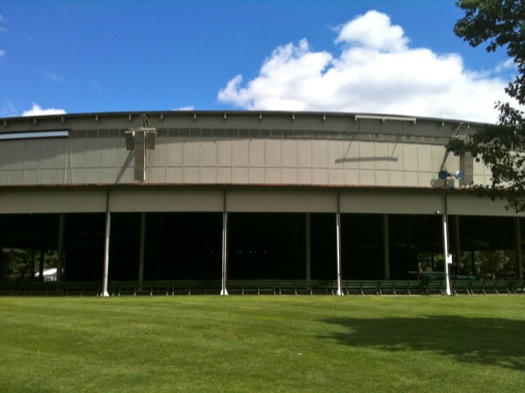
What, exactly, is the value of architecture? Tanglewood, the summer home of the Boston Symphony Orchestra, celebrates its seventy-fifth anniversary this year, and presents some useful lessons as to the nature of architectural patronage.
Tanglewood, on a sunny Berkshire afternoon, seems like a place out of fiction, which it is; the bucolic grounds takes its name from Hawthorne’s “Tanglewood Tales,” composed by the author during a yearlong stay on an adjacent property. The BSO took over in 1937, and it was during a performance under a tent that summer, when a driving rain interrupted an all-Wagner program (always drama with Wagner), that artistic director Serge Koussevitsky decided that some kind of architectural enclosure was necessary as protection from the elements. That very evening $30,000 was pledged for such a project.
Koussevitsky selected Eliel Saarinen for the job, a modernist choice that he insisted on despite pressure to build in the New England tradition. Saarinen responded with a proposal that came in well over the Symphony’s $100,000 budget. Told to trim it down, he responded that there was no way to get it done for under $125,000. “Of course,” Saarinen wrote to his client, “a solution could have been easily had by erecting just a shed without any consideration for good proportions, good architectural qualities, and a proper fitting into the landscape. And as any building could accomplish this, why then, hire an architect?”
Why indeed? Saarinen, in frustration, had unwttingly fired himself. The Symphony bought his plans for four thousand dollars, and hired a local engineer, Joseph Franz, to execute them. When Franz showed up at Saarinen’s Michigan office to go over his revisions, Saarinen was appalled, and washed his hands of the commission. His principal objection was to three supporting columns Franz had undecorously placed in the orchestra, including one right on center, each creating a significant visual obstruction.
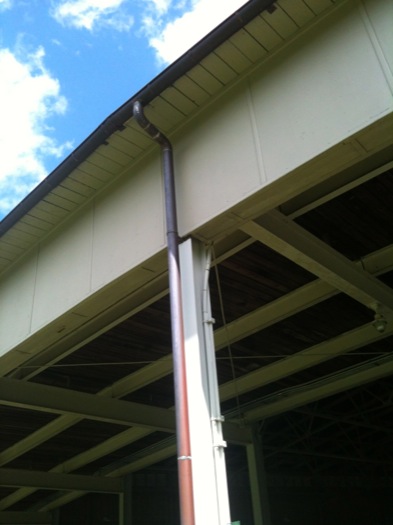

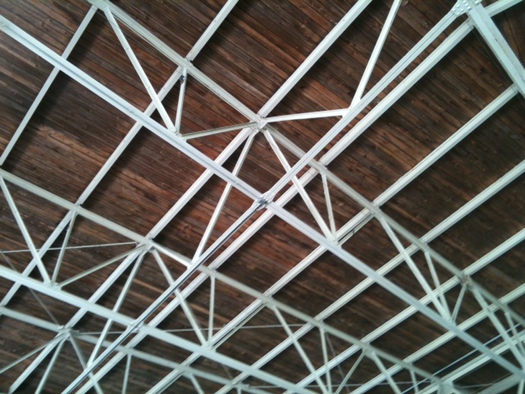
Unornamented peripteral pillar; column on center in the orchestra; roof truss
As built, the Shed is no architectural masterpiece, though it does have its moments. Aside from the offending columns — still blocking views after 74 years — Franz’s truss system is a handsome enough work of engineering, and its rear circulation path is a comfortable, shaded avenue. The acoustics are decent; if you’re a pedant about sound quality, wait until the players return to their McKim, Mead & White landmark back in Boston — an outdoor concert isn’t for you. Most people experience the Shed from the Tanglewood lawn, from whence it appears as a fairly nondescript fan-shaped shell with a peristyle of supporting pillars that are, as Saarinen averred, totally lacking “architectural qualities.” Sitelines from the lawn are not stellar (video screens help), but if you’ve got a blanket and a bottle of wine, does it really matter? The trustees, anyway, could hardly complain: the whole thing cost all of ninety thousand dollars.
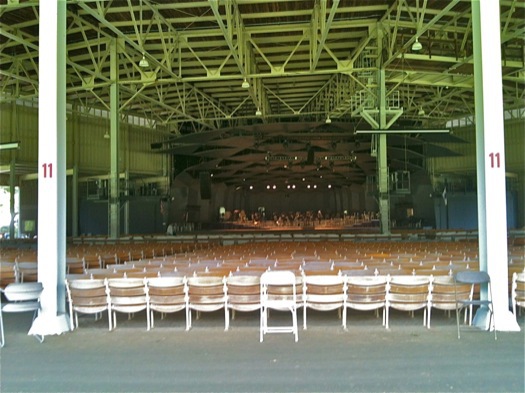

Shed seating; Fenway Park grandstand
If there is a New England landmark that the Shed actually recalls, it is another beloved entertainment palace built by engineers: Fenway Park. They share a similar industrial language — the red aisle numerals appear to be of the same font, which is almost certainly no accident — and if neither is particularly luxurious, they both impart a kind of happy sympathy among attendees. They also share a philosophic understanding that the draw is not the venue itself, but the performance it showcases, and the sharing of a communal experience.
In the 1990s, when the BSO got around to adding another peformance hall at Tanglewood, they had the funding to hire an architect and carry out his plan. But here again the orchestra’s decisions are instructive. The BSO did not go out and commission a “name” architect, but instead chose a Boston practitioner, William Rawn, with excellent credentials. The result, Ozawa Hall, is a beautiful work of architecture, a brick-clad, barrel-vaulted building with an interior of warm woods that straddles the modern and the traditional. The site-lines are excellent (no offending columns), and the acoustics are, too.
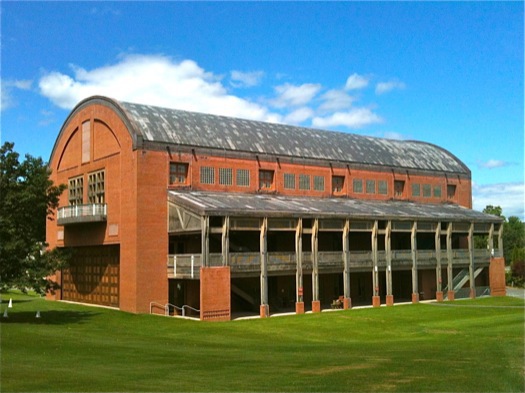
Ozawa Hall
Unfortunately, the Berkshires have not always inspired such rational architectural planning. The “Bilbao Effect” was actually born not on the Basque coast but in nearby North Adams. It was there that Tom Krens, with a plan in part authored by Frank Gehry, transformed a mouldering industrial complex into a cultural lynchpin, Mass MoCA. That became the model for their Guggenheim in Bilbao, which has been a model applied far too often, and sometimes with disastrous consequences. Good that it’s not called the Berkshire Effect. Caveat emptor.
Observed
View all
Observed
By Mark Lamster
Related Posts

Business
Courtney L. McCluney, PhD|Essays
Rest as reparations: reimagining how we invest in Black women entrepreneurs

Design Impact
Seher Anand|Essays
Food branding without borders: chai, culture, and the politics of packaging

Graphic Design
Sarah Gephart|Essays
A new alphabet for a shared lived experience

Arts + Culture
Nila Rezaei|Essays
“Dear mother, I made us a seat”: a Mother’s Day tribute to the women of Iran
Recent Posts
Candace Parker & Michael C. Bush on Purpose, Leadership and Meeting the MomentCourtney L. McCluney, PhD|Essays
Rest as reparations: reimagining how we invest in Black women entrepreneurs Food branding without borders: chai, culture, and the politics of packaging Why scaling back on equity is more than risky — it’s economically irresponsibleRelated Posts

Business
Courtney L. McCluney, PhD|Essays
Rest as reparations: reimagining how we invest in Black women entrepreneurs

Design Impact
Seher Anand|Essays
Food branding without borders: chai, culture, and the politics of packaging

Graphic Design
Sarah Gephart|Essays
A new alphabet for a shared lived experience

Arts + Culture
Nila Rezaei|Essays
